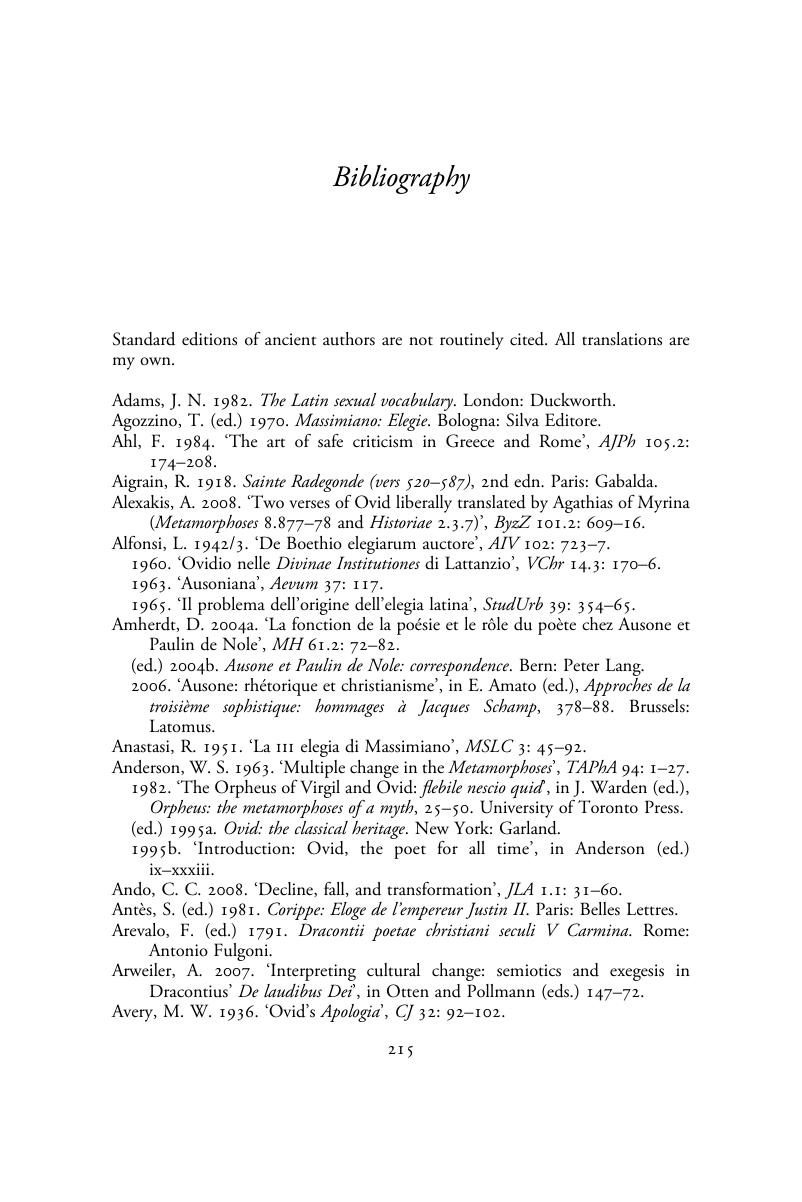Book contents
- Transformations of Ovid in Late Antiquity
- Transformations of Ovid in Late Antiquity
- Copyright page
- Epigraph
- Contents
- Acknowledgements
- Abbreviations
- Introduction
- Chapter 1 Ovid Recalled in the Poetic Correspondence of Ausonius and Paulinus of Nola
- Chapter 2 Ovid and the Transformation of the Late Roman World of Rutilius Namatianus
- Chapter 3 The Poet and the Vandal Prince
- Chapter 4 The Remedies of Elegy in Ovid, Boethius and Maximianus
- Chapter 5 The Ovidian Heroine of Venantius Fortunatus, Appendix 1
- Conclusion
- Bibliography
- Index Locorum
- General Index
- References
Bibliography
Published online by Cambridge University Press: 14 November 2017
- Transformations of Ovid in Late Antiquity
- Transformations of Ovid in Late Antiquity
- Copyright page
- Epigraph
- Contents
- Acknowledgements
- Abbreviations
- Introduction
- Chapter 1 Ovid Recalled in the Poetic Correspondence of Ausonius and Paulinus of Nola
- Chapter 2 Ovid and the Transformation of the Late Roman World of Rutilius Namatianus
- Chapter 3 The Poet and the Vandal Prince
- Chapter 4 The Remedies of Elegy in Ovid, Boethius and Maximianus
- Chapter 5 The Ovidian Heroine of Venantius Fortunatus, Appendix 1
- Conclusion
- Bibliography
- Index Locorum
- General Index
- References
Summary

- Type
- Chapter
- Information
- Transformations of Ovid in Late Antiquity , pp. 215 - 244Publisher: Cambridge University PressPrint publication year: 2017

